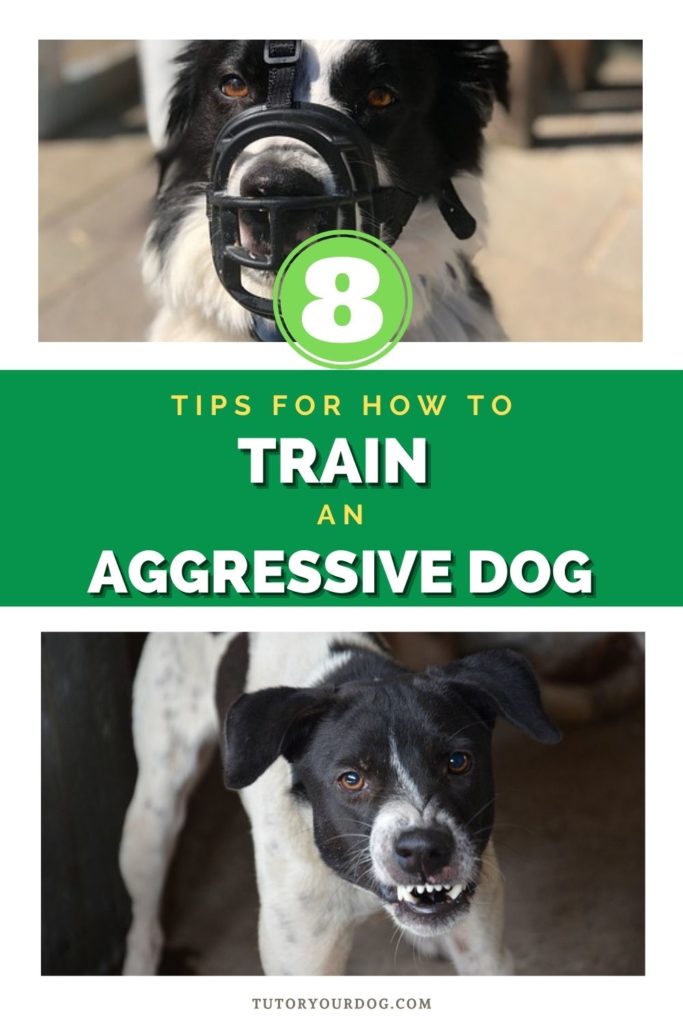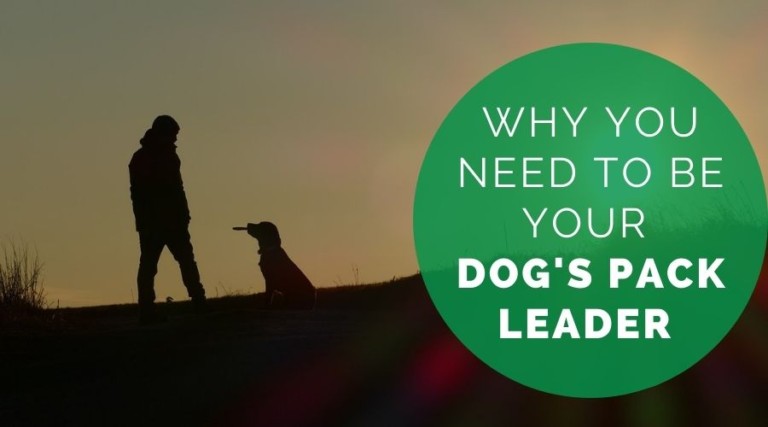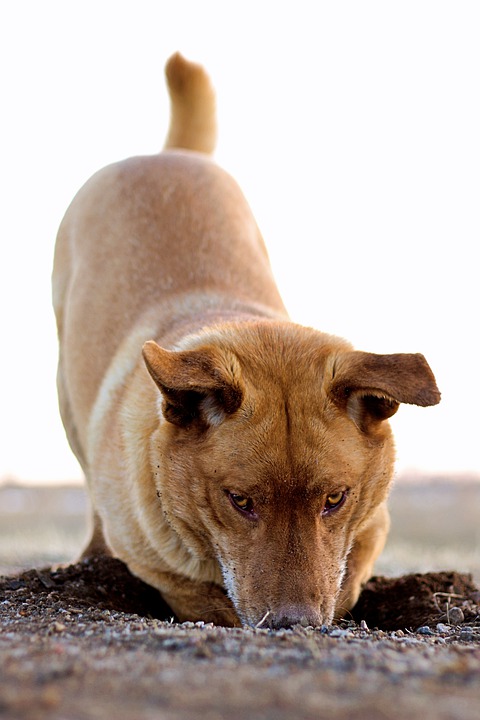{This post may contain affiliate links. This means we may make a small commission at no extra cost to you. This website is a participant in the Amazon Services LLC Associates Program. As an Amazon Associate we earn from qualifying purchases. We only recommend products that we believe will be of value to our followers. Click HERE to see our disclosure for details.}

Most dogs love to play and cuddle with us, but sometimes something happens and it brings out an aggressive side of our dog. When this happens, quite frankly, it isn’t an issue to ignore because aggressive behaviors of dogs may escalate and thus, should be resolved ASAP. In this article, you will first learn about the reasons behind your dog’s aggression and the actionable things you can do to calm your dog and train him in a better way. These tips can certainly help but learning how to train an aggressive dog is complicated and it may be something that you will need professional help with.
*Training a dog with aggression issues is not something you should attempt to do by yourself if you do not have experience or knowledge about dog behavior. Aggressive dogs can quickly become dangerous to people, other dogs and other animals. If you do not have experience with this type of dog behavior, call a professional dog behaviorist immediately.
Why Do Dogs Act Aggressively?
Dogs act aggressively for a variety of reasons. Training an aggressive dog takes time and effort, so this is something you should definitely keep in mind. To resolve the aggression, you first need to learn what’s actually triggering it in the first place.
The most common causes behind a dog’s aggression are:
- Fear
- Defense
- Social anxiety
- Frustration
- Territorial dominance

Tips To Train An Aggressive Dog
Below, you can find our best tips to train an aggressive dog. Please keep in mind that the safety of yourself and your family should always come first.
*If your dog is aggressive and you or anyone else is at risk of being attacked, you should not try to work with the dog on your own. Contact a qualified dog behaviorist immediately.
·1. Exercise Your Dog
Dogs have loads of energy. When they don’t have a way to release it, they develop behavioral issues. This can sometimes result in aggressive behavior. So, you need to play with your dog and exercise him to release all the pent-up energy and establish a calmer mental state.
Plus, that will be some additional exercise and seamless fun for you and your best companion!
A ball launcher is an excellent way to exercise your dog. Click on the image below to check out this ball launcher on Amazon.

2. Introduce Your Dog To Other Friendly Dogs
If your dog is acting aggressively out of fear of other dogs, he will gradually need to be desensitized to other dogs. To do this, set up situations for him where there are friendly dogs (on leash) that won’t react to him.
With your dog on a leash, keep him at a distance from the dogs where he feels safe. This could be 100 feet away or it could be further, it all depends on your dog’s comfort level. Reward him every time that he ignores the other dogs and focuses on you. At your dog’s comfort level, gradually decrease the distance between your dog and the other dog. This may take days or months but go at a speed that your dog is comfortable with, never putting him in a situation that he is uncomfortable with. Reward your dog every time that he ignores the other dogs and doesn’t react to them.
Your dog may get to the point that he will be able to play with the other friendly dogs but some dogs may not get to this point and that’s ok. Not every dog has to play with other dogs. The total goal of this exercise is to be able to walk your dog around other dogs without your dog acting out aggressively. If you know that your dog is not ok with playing with other dogs, do not take him to off leash areas. Walk him in leashed areas only where other dog owners respect the leash rules.
3. Try Using A Muzzle
A muzzle is the something you can try to calm your dog and sometimes it is the best option to control your dog’s aggression if you need to take him out in public. It may be difficult at the start to be ok with a rubber cage around his face, but after a few times wearing it, it will stop creating a nuisance. You can let your dog get used to wearing the muzzle at home before taking him out in public. Put the muzzle on him for10 or 15 minutes a few times a day so that he gets use to wearing it. A muzzle can be an excellent tool to train an aggressive dog, when used properly.
Click on the images below to check out dog muzzles on Amazon.



4. Use Positive Reinforcement
Implementing positive reinforcement is one of the best ways to train your dog. Positive reinforcement is treating your dog with a lot of praise and treats. For instance, if your dog gets fearful or aggressive seeing a stranger, he needs to keep a fair distance to avoid provoking his fearful or aggressive reaction. The second he ignores the stranger and focuses on you, give him a treat and praise him. Gradually move closer to the stranger and reward when your dog ignores the stranger and focuses on you. This could take several days, weeks or months, it will all depend on your dog and his comfort level in the situation.
Over time your dog may allow people to start coming towards him slowly and pat his back but some dogs may not want to be approached by strangers for pats. In this situation, you need to be your dog’s advocate and let people know that he does not want to meet them.
Click on the images below to check out my dog training treat recommendations on Amazon.



5. ·Establish Yourself As The Pack Leader
I don’t mean be dominant to your dog. Being dominant to an aggressive dog can quickly escalate the situation. Instead, take control and let your dog know that you are the pack leader by ensuring that he is safe at all times. This will help him to realize that he can trust you to take care of him and any situation that may occur. This is good for any dog that acts aggressively out of fear. Once he realizes that you have his back, he no longer will feel that he has to defend himself, he will know that you will look out for him and keep him safe.
Track your dog’s progress and plan his training sessions and appointments with our convenient and easy to use printable Dog Management Binder.

·6. Be Calm In Front Of Your Dog
If your dog is snarling or snapping, and you shout or scold him, it may cause him to act defensively, which could end up making him attack. The best thing you can do is to remain calm in front of your dog. Don’t scream, run or turn your back at your aggressive dog because all of these movements can provoke him. Your calm behavior is the key to properly train an aggressive dog and calm your dog too, so stay cool!
·7. Set Boundaries
Set boundaries and make it clear to your dog that biting clothes or hands is unacceptable. But when the dog’s aggressive instincts are awake, you shouldn’t use any aversive methods to calm him down. This may cause the dog to attack you to defend himself.
Click on the images below to check out my recommendations for dog training supplies on Amazon.



8. ·Call A Professional
If you are doing all that is necessary to train an aggression dog but your dog still acts aggressively, you need to visit a professional. A dog behaviorist can help you discover the cause of your dog’s aggression. They can also give you advice on how to correct it. Ultimately, you can sign your dog up for training sessions with that professional. This will allow you to smoothen out any training issues you may have with your dog.
Final Thoughts
Dogs are powerful creatures, whose aggressive behavior can be a catalyst for a lot of unpleasant situations and tension. This is the exact reason why resolving your dog’s aggression issues is of the greatest importance. The best thing you can do is try to stay calm when your dog behaves aggressively. Remember that you are the greatest example for your dog. Your dog will pick up on your mood and any stress or tension you may be feeling.
Stay calm. Stay patient. Train your dog!
*These tips are not for a dog that has a bite history. They are not for the owner who has no experience training a dog. If there is any risk that your dog may bite someone, call a professional dog behaviorist immediately for assistance.
*Disclaimer: All information presented here is intended for entertainment purposes only. It is not provided in order to evaluate the temperament of a dog or set up a training plan for a dog with severe behavior issues. The author, publisher, and contributors accept no responsibility for such use. Anyone having a dog with severe behavior problems should consult with a dog behaviorist or dog trainer immediately to prevent harm to themselves and other people or animals.





